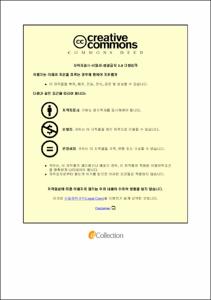초음파 무화에 의한 미립자 분리기술과 액체 방사성 시료농축에의 응용
- Alternative Title
- Minute particle separation technique by using ultrasonic atomization and its application to condensation of liquid radioactive sample
- Abstract
- It is very important to obtain non-agglomerated nanoparticle state for practical application of nano technology. In order to improve the functionality of products using nanoparticles, more precise control of particle size distribution is required. Although the techniques of dispersing agglomeration of nanoparticles have been frequently reported, there are quite a few limitations for practical use. Generally, a particle size distribution depending on the dispersion exists even in the dispersed suspension. In this study, a technique for separating a minute particle such as nanoparticles from a suspension was proposed by using ultrasonic atomization. The technique was applied to the condensation of liquid radioactive sample.
First, to obtain the optimal driving conditions for ultrasonic nebulizing, the capillary wave caused by ultrasound on the water surface was analyzed theoretically. From the possible solutions of Mathieu’s equation, the condition for amplitude diverging with time changes was investigated. From the results, it was confirmed that the size of droplet is related to the surface tension of the suspension, the density of the suspension, the driving frequency and the amplitude displacement of the vibrator. Especially, the possible ranges of the driving frequency and the vibration displacement for nebulizing were obtained numerically, and the droplet size distribution was obtained in these ranges.
Second, to confirm experimentally the change of the droplet size depending on the surface tension of the suspension, Al2O3 suspension of 0.1 wt.% was made using Al2O3 powder with the average diameter of 300 nm and the surface tension of the suspension was changed with different concentration of ethanol. The range of the changed surface tension was from 21.6 mN/m to 69.2 mN/m. The droplet size was measured with the different surface tension. The size of the droplet from the suspension by the ultrasonic atomization were measured. In order to confirm the size change of the nanoparticles which can be contained in the droplet according to the size change of the droplet, the particle size distribution in the recollected suspension was observed with an optical microscope. As the results, it was confirmed that the droplet size decreased as the surface tension decreased, and the size of particle including the droplet could be decreased. It means that the maximum size of separated nanoparticle can be controlled by modulating the surface tension of the suspension in the proposed method. Furthermore, the size of the atomized droplet is related to the ascensional force from the air pump in the proposed system. Therefore, in order to examine the effect of the ascensional force from air pump in the droplet size, the maximum size of the droplet by the wind velocity change was observed with an optical microscope. In this case, as the suspension, distilled water was used. From the results, it was confirmed that the maximum size of the droplet increase as the wind velocity increases. It demonstrates that the maximum size of the atomized droplet is controlled by controlling the wind velocity from the air pump, and the size of the separable nanoparticle from the suspension can be controlled.
Next, to examine the size of nanoparticle including the droplet, using the suspension of 0.002 wt. % with TiO2 powder, which has average diameter of 50 nm, the particle size distribution of nanoparticles in the recollected suspension was measured by using the proposed system. As the results, the peak in the size distribution showed at around 55 nm in the recollected suspension. It demonstrates that it is possible to separate and to recollect the nanoparticles monodispersed by using the suggested method.
Finally, in this study, an effective concentration method with ultrasonic nebulization was suggested for sea water samples in radionuclide analysis. Radionuclide analysis of sea water is necessary to monitor environmental contamination due to the radioactive substances from nuclear facilities. However, it is difficult to analyze the nuclides promptly with the conventional method of coprecipitation during emergencies because the method requires long precipitation times. whereas the conventional method required at least 48 h for precipitation, It took only 4.5 h to remove the moisture from 40 l of sea water with the proposed method. From the results of the gamma-ray spectra of the concentrated samples, the validity of the proposed method with ultrasonic nebulizaion was confirmed.
- Issued Date
- 2017
- Awarded Date
- 2017. 2
- Type
- Dissertation
- Publisher
- 부경대학교 대학원
- Affiliation
- 부경대학교 대학원
- Department
- 대학원 물리학과
- Advisor
- 김무준
- Table Of Contents
- I. 서론 1
II. 진폭발산 이론에 의한 초음파 무화 입자의 크기 5
III. 나노입자의 분리포집 16
3.1 표면장력에 의한 영향 16
가. 실험장치 16
나. 결과 및 고찰 18
3.2 풍속에 의한 영향 27
가. 실험장치 27
나. 결과 및 고찰 40
IV. 액체 방사성 시료농축 45
4.1 수위에 따른 초음파 무화효과 46
가. 실험장치 46
나. 결과 및 고찰 48
4.2 액체 방사성 시료농축 49
가. 시료농축 장치 49
나. 결과 및 고찰 57
V. 결론 61
부 록 64
참고문헌 74
저자관련 논문 80
- Degree
- Doctor
- Files in This Item:
-
-
Download
 초음파 무화에 의한 미립자 분리기술과 액체 방사성 시료농축에의 응용.pdf
기타 데이터 / 2.17 MB / Adobe PDF
초음파 무화에 의한 미립자 분리기술과 액체 방사성 시료농축에의 응용.pdf
기타 데이터 / 2.17 MB / Adobe PDF
-
Items in Repository are protected by copyright, with all rights reserved, unless otherwise indicated.